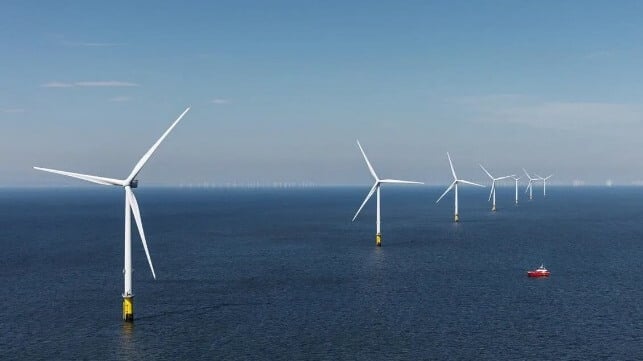Netherlands, Norway and Denmark Each Revise Offshore Wind Farm Tenders

With the ongoing challenges in the offshore wind energy sector impacting the economics and development of sites, the Netherlands, Norway, and Denmark have each announced revised approaches for their upcoming tenders to deal with as the Dutch termed it, the “deteriorating market conditions.”
European governments have been exploring different approaches and the levels of subsidies required to support the development of the sector. Denmark in January shelved plans for a tender while its parliament was exploring the model, as did Norway. Last week, the Netherlands’ Ministry of Climate Policy and Green Growth announced it was also revising its terms and that it would only be proceeding with one scaled-down site and deferring two others.
The Netherlands had originally planned to offer three sites in September, ranging between 1 and 2 GW of capacity. The Dutch government’s plans to proceed with the auctions on a “zero-subsidy” model ran into trouble. Major developers including Ørsted said they would not be participating in the upcoming round because they believed the sites would not be financially viable.
Calling wind energy “indispensable” in the country’s current and future energy plan, the ministry said it was taking steps to make the auction more attractive to allow developers to proceed at a realistic price. Rules and criteria are being relaxed with the government simplifying the requirements for developers. They will also be providing a provision that the winning bidder will have the ability to revoke the permit in the first two years if market conditions are too bad.
The Netherlands will proceed with a single auction in September for a reduced size from 2 GW to 1 GW for the one project, Nederwiek Wind Farm Site I-A. They said this would lower the risk for the developer. The planned sites at Ijmuiden Ver Gamma A and Gamma B, each of which would be 1 GW, will be deferred with tenders planned for a later date.
Longer-term the government is looking to the release of a new action plan for the offshore wind energy industry. Among the steps being considered for the period starting from 2027 are financial support instruments. They cite the possibility of establishing minimum and maximum price guarantees.
Denmark reports that it has decided to proceed with a new auction in September for 3 GW of capacity. The government is committing up to $8.32 billion over the 20-year life of the projects in subsidies.
Norway is also restarting the bidding for its Utsira Nord area, accepting applications from developers till September 15. It had previously stopped this site, which will require floating wind turbines. It will offer three leases, each with a capacity of up to 500 MW, and the terms were established to recognize the early development stage of the floating wind technology.
Norway will give the selected bidders two years to mature the projects after selection. It is also committing to up to $3.36 billion in subsidies to support the development and operation of the large-scale floating wind farms.
Governments are looking for new means to encourage offshore wind development despite the rising costs and supply chain problems. Earlier this month, the UK incurred a setback in its plans when Ørsted announced it had decided to discontinue the Hornsea 4 project (2.4 GW) in its current form. It cited several adverse developments relating to the continued increase of supply chain costs, higher interest rates, and an increase in the risk to construct and operate Hornsea 4 on the planned timeline for a project of its scale.
